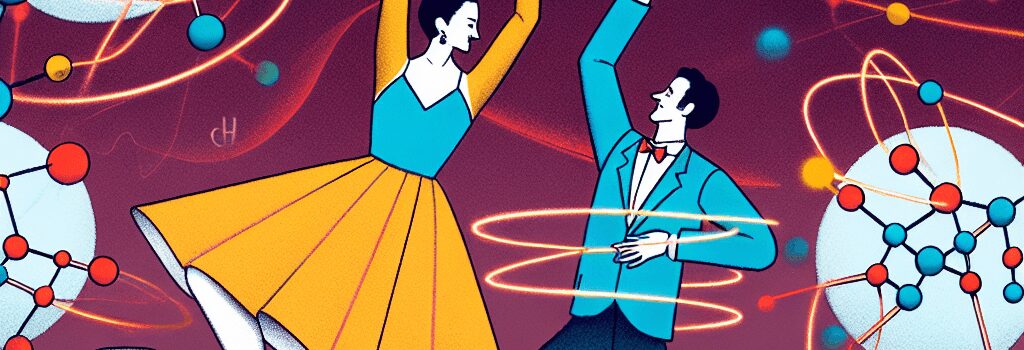2025 Dance Your PhD Winners: Chemesthesis to Quantum Gases

Every year, the Dance Your PhD contest challenges doctoral researchers to translate complex scientific ideas into the universal language of movement. Now in its 17th edition, the competition draws entries from around the globe but this year’s top prizes went exclusively to European scientists. Let’s break down the four category champions and explore the deeper technical insights and broader context behind their award-winning performances.
Overall Champion & Chemistry Category: Sulo Roukka (University of Helsinki)
Thesis: “Insights into Oral Chemesthetic Perception: A Focus on Food-Related Behavior”
Research Focus: Chemesthesis—chemical irritants that activate trigeminal nerve endings to produce sensations such as heat, coolness, tingling, or pain.
Roukka’s interpretive dance depicts two primary molecular pathways: the TRPV1 receptor activated by capsaicin (the pungent compound in chili peppers) and the TRPM8 ion channel gated by menthol (the cooling agent in mint). At the cellular level, capsaicin binding induces a conformational change in TRPV1, opening a nonselective cation channel and depolarizing nociceptive neurons. Menthol does the opposite: it stabilizes TRPM8 in an open state at lower temperatures, increasing intracellular Ca2+ and generating a “cool” signal. Roukka synchronized LED lighting cues with his choreography to represent the temporal kinetics of receptor desensitization and cross-modal adaptation observed in psychophysical trials.
Physics & AI/Quantum Science Category: Arfor Houwman (University of Innsbruck)
Thesis: “Collective Phenomena in Ultracold Dipolar Quantum Gases”
Houwman’s dance visualizes the cooling of atomic ensembles to nanokelvin temperatures in a magneto-optical trap (MOT), followed by evaporative cooling in an optical dipole trap. He uses synchronized laser pointers (wavelength 589 nm for sodium) to dramatize Doppler cooling transitions and the subsequent Bose–Einstein condensation of dipolar atoms. His performance also includes quantum entanglement motifs, leveraging projections of simulated many-body wavefunctions. Judges praised the clear depiction of long-range dipole–dipole interactions and mode softening leading to a roton-like excitation spectrum.
Biology Category: Priya Reddy (Friedrich Schiller University Jena)
Thesis: “Unravelling the Plant Mechanisms Involved in Plant-Microbe Interactions”
Reddy’s choreography interprets the molecular dialogue between plant pattern recognition receptors (PRRs) and microbe-associated molecular patterns (MAMPs). She employs gestural motifs to show receptor dimerization, downstream mitogen-activated protein kinase (MAPK) cascades, and the synthesis of phytoalexins. The dance culminates in a stylized root hair curling sequence—an homage to rhizobial nodulation—and highlights CRISPR-Cas9 knock-out experiments that dissect gene functions in symbiosis versus defense.
Social Sciences Category: Manisha Biswas (Humboldt University of Berlin)
Thesis: “The Powerful Outcomes of Collective Synchrony”
Biswas explores how synchronized behavior—marching, chanting, or even viral TikTok challenges—builds social cohesion and influences group decision-making. Her routine uses ensemble choreography to model dynamical systems theory: she encodes the Kuramoto model of coupled oscillators and demonstrates how varying coupling strength leads to phase locking or chaotic desynchronization. The performance integrates survey data on trust and cooperation, visualized through projected network graphs.
The Science of Chemesthesis: A Deep Dive
Chemesthesis involves specialized sensory neurons expressing transient receptor potential (TRP) channels. Beyond TRPV1 and TRPM8, researchers study TRPA1 (activated by mustard oil, garlic compounds) and TRPV3/4 (warmth sensors). Current projects leverage cryo-EM to map channel structures at sub-angstrom resolution and optophysiology to record live neuronal activity. Understanding these pathways has applications in designing targeted analgesics, temperature-modulating foods, and even topical pharmaceuticals.
The Role of AI and Quantum Science in Modern Research Communication
This year’s sponsor, Sandbox AQ, develops AI-driven quantitative models and quantum-safe cryptography. Their recent Series B funding round valued them at over $1.2 billion, underscoring industry confidence in merging machine learning with quantum hardware. Contest founder John Bohannon notes that integrating AI for choreography analysis and automated video scoring could become standard in future editions.
Impact on Science Communication and Outreach
- Engagement Metrics: Combined YouTube views across winning videos exceeded 500,000 within one week—triple last year’s rate.
- Expert Opinions: Science communicators praise the contest for demystifying STEM concepts and fostering interdisciplinary collaboration.
- Future Directions: Virtual reality (VR) and augmented reality (AR) platforms are being piloted to create immersive dance-science experiences, potentially reaching classrooms worldwide.
As Dance Your PhD evolves, it continues to blend rigorous scholarship with creative performance, proving that the frontiers of science can be explored not only in the lab but also on the dance floor.